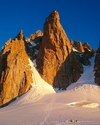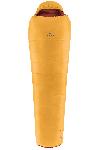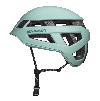Journalism, education and avalanches. 10 things worth knowing. By Giulio Caresio
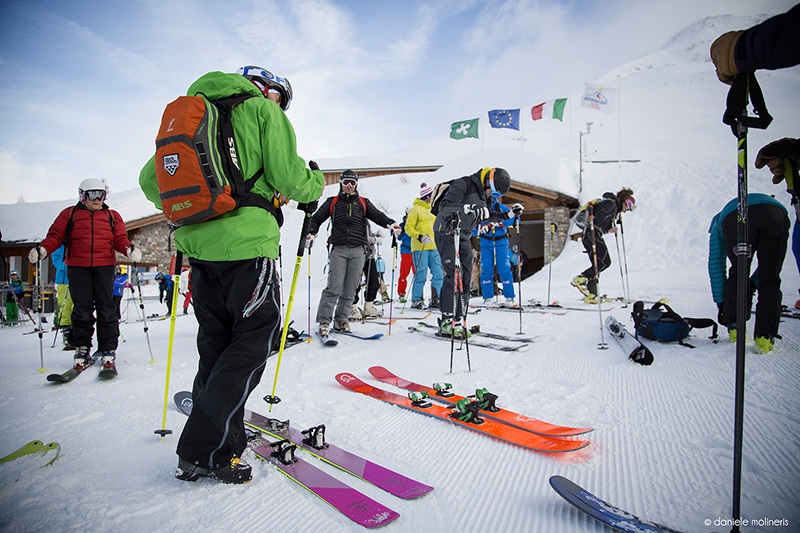
 1 / 19
1 / 19 Daniele Molineris
Daniele Molineris
An afternoon's introduction and evening welcome was followed the next morning by skiing. We were split into various groups for freeriding, ski mountaineering and snowshoeing before spending the rest of the afternoon in the conference room; in total a day and a half to allow journalists to find out more about the professionalism of mountain guides (in Italy they total 1200). And the guides to share ideas and information with journalists.
Things began practically: preparing the gear, checking avalanche transceivers and also assessing the snowpack in gullies, slopes and cornices in order to grasp the complexities of it all, to understand the elements (such as wind), the importance of being accompanied by a pro who is capable of interpreting nature's warnings when on a given terrain and under certain conditions.
We then moved on to theory lessons but these remained very concrete thanks to Alfredo Praolini of the Lombardy Weather Centre. We were subsequently enlightened with a mine of information thanks to Fabiano Monti, snowboard instructor, Environmental Science researcher at the University of Insubria and a key player in the project "Freeride Livigno - Feel the powder."
Obviously there were also fun moments from the welcoming meal to the "late night" beers that, as usual, provided more informal, indispensable chances to swap ideas.
A heartfelt thanks to all those who worked so hard at organising these two days (in particular to Giuliano Bordoni and Whiteline guide Alberto Marazzi who led my freeride group with contagious enthusiasm). After meetings like this you return home content and full of new energy. And with some new knowledge and awareness that needs sharing:
1) Mountain guides are neither masters of extreme conditions nor simple escorts for the fearful. These two opposing ideas abound in public opinion and the record needs to be set straight for both. Those who write about the mountains need to be aware of this important point.
On the one hand we often think that guides should only be used if we are technically very apt, i.e. if we want to go in search of something extreme, and not merely to learn or be guided in more "normal" conditions. Wrong. Guides are instructors and as such they adapt to the needs of the people they are guiding, they are more than happy to work and often have plenty of time to do so.
On the other hand, there are those who already know how to take to the mountains fairly well, without a pro, and they conceive using a guide as an act of cowardice or, worse still, an admission of their lack of ability. This perception is completely wrong, too: more often than not it's the top athletes who check with, and are accompanied by, the best local mountain guides. Humility is a sign of intelligence, preparation, skill. And not the opposite.
2) Snow is not homogeneous and very difficult to read and interpret even for the experienced. As such, predicting its behaviour is just as complicated: caution is required. Fabiano Monti highlighted how even in Antarctica, where to the eye the snowpack appears extremely smooth, there is a significant density variability, crystal variability etc. both stratigraphic (ie vertical) and lateral (ie horizontal). He demonstrated this using detailed data (radiometric and infrared photo) taken at the end of 2012 at the Italian-French Concordia base (Dome C, 3233 m) from a 20m long and 2m high trench. It's clear therefore that since avalanches are closely related to these discontinuities, predicting them is very difficult. Even more so in the Alps where the morphology and climate is much more complex and varied.
3) Experience and local knowledge are essential. The fact that mountain guides spoke carefully to the local Madesimo colleagues before venturing out that morning speaks volumes about the importance of specific experience about the terrain. When have in-depth, daily knowledge about slopes and ski areas you know all about what conditions generate avalanches, the possible size of an avalanche etc. Don't worry about askin and if you have even the slightest doubt contact the local mountain guides and ask them for advice about your planned outings.
4) The danger level is an estimate and not an precise number. Those who have racked their brains in the past with a bit of science know all too well about the usefulness and also the limits of both. Much of snow science is based on estimates derived from the analysis of snow profiles and empirical evidence of stability. Unlike a number, which is an objective value (bar an error) that refers to a parameter, an estimate is an indication (partially subjective) that can be influenced by how the observer interprets it. These estimates are derived from the avalanche danger that indicate the likelihood of an avalanche, expressed in the European scale ranging from 1 (weak) to 5 (very strong). This is merely the apex of a pyramid of information that is contained in the avalanche bulletin itself. With a little bit of experience and good will we can learn to read and interpet this bulletin more carefully.
5) Settlement, consolidation and overload: three concepts you must be familiar with in order to interpret the terrain and avalanche bulletins. Snowpack settlement refers to it becoming denser and thus reducing in volume. More important though for snowpack stability is consolidation which is often referred to in avalanche bulletins; this refers to the strength of the bonds between different layers of snow. The probability of an avalanche release is often connected to overload (ie an addition of a load that must be "supported") on a given slope. Triggers can be heavy: two or more skiers or snowboarders who don't respect the correct distance between each other, a piste-groomer, an explosives, etc... And triggers can be light: skiers or snowboarders who ski clean lines without falling (singles or groups that respect the correct distance between each other), a "delicate" hiker, etc..
The distance that must be kept between one skier and the next is complex: it's worth remembering that there is "lightening" distance (to avoid overload) which is minimum 10m during the ascent and far more during the descent, and there is also a "safety" distance which can be far greater: on avalanche prone slopes it is best to proceed one at a time from one relatively safe point to the next.
Furthermore, so as not to increase the risk of triggering an avalanche it is worth avoiding crossing a slope diagonally and, instead, creating a linear track, of gentle curves that are not to wide and that follow the fall line.
6) More than 80 % of avalanche accidents in Italy occur when the avalanche danger is level 2 and 3 (respectively 24.4% and 59.4 % in 2012, according to data published by National Mountain and Caving Rescue service). We must therefore stop writing that people die only with there is an advanced avalanche risk (above grade 4 for example), because apart from being false, it also sends the - far more serious - indirect wrong message: "don't worry if the avalanche danger level is less that 4, you'll be OK."
7) Many accidents occur due to small and medium-sized avalanches. These occur more frequently and are harder to predict than huge catastrophic avalanches which often make headline news and which, nowadays, can be predicted more accurately and are consequently less dangerous than in the past.
8) Level 3 does not medium danger: even if this number is located in the middle of the scale, it signifies a marked danger that requires maximum care and attention. It is worth bearing in mind that the avalanche bulletin is created for a variety of users, including those who stay at home or those who drive along roads with level 3 and run no particular risks. Level 4 indicates a risk level that can involve lines of communication while level 5 can also include the evacuation of homes (in highly critical cases these two levels presuppose the help of the Civil Protection).
Moreover, even Level 1 does not mean absolute safety and this is why we should never let our guard down. Good basic preparation and knowing self-rescue techniques are always fundamental when we enter a non-protected natural environment.
9 ) Transceiver - Probe - Shovel, three pieces of gear that must be used as a single unit when skiing off the groomed pistes. These three pieces of gear, coupled with a culture of correct use, explain the 3 excellent results published recently in Switzerland (see the graphs).
a) despite a drastic increase in the number of avalanches that involve people (a number that is certainly linked directly to the increasing number of people who venture into the mountains) the percentage of serious injuries seems to be in decline in recent years;
b ) despite the aforementioned increase, the annual average number of avalanche deaths during the last 20 years has actually decreased compared to that of the entire 76 year data range;
c) the average self-rescue time is far less than that of traditional mountain rescue, hence the chances of success are fare greater.
10) We need to work on promoting educational projects, such as "Freeride Livigno - Feel the powder" that meet the increasing needs of the freeriders. Creating the right danger awareness is of utmost importance: local, avalanche bulletins published every morning (www.livigno.eu), training sessions every Sunday afternoon, a single price to rent all the self-rescue kit, etc...
To end, two questions and a quote.
But we are sure that you will die so much because of avalanches in the mountains?
This season certainly have been many deaths (currently in Italy 12 people), and we really hope that the painful list stops here. However, looking at the data surprising to note that accidents caused by avalanche in which intervened Mountain Rescue in 2012 represent just 0.67% of the total (data CNSAS).
Missing, however, in the data I have available, the ability to correlate these rates with that of the deaths, the correlation that would be very useful to better understand the situation. It is sure that accidents do the master falls ( 31.5%) phenomenon cuts across all disciplines summer and winter. But it is equally certain that the falls, if not glamorous, not newsworthy.
How can you adjust for the bans, when they are appropriate?
One thing is certain: if the bans do not respond to a policy of collective sense are counterproductive and feed heavily transgression. This is what happens on some city streets where the speed limit is set at 50 km/h, but the result is that 95 % of the vehicles traveling over 70 km/h, however, no major differences in risk. I believe that a general prohibition of off-piste would produce similar results. Conversely, a ban on time, in space and time, where and when appropriate, it may make sense to avoid incidents at high risk for the community ( but keep in mind the opposite risk, the lower the perception of danger when the ban will be removed or when you choose not to adopt it ).
Among other things, the gap between rule and collective social perception of the problem is what happens to avalanches on liability : in the face of high civil and criminal legal responsibility (with the possibility to get even the criminal offense of murder) corresponds to a low perception of the collective responsibility of those who attended the snowy slopes. More reason to say, sensible rules and especially culture.
And to end, a quote from the great American ski and snowboard filmmaker Warren Miller, included in the safety chapter of Martino Colonna's book (published by Hoepli). more than anything else it's and incitement and its validity - in both journalism and the mountains - has been widely confirmed during this meeting: "Gotta use your brain, it's the most important part of your equipment."
Bibliography
- Il Soccorso Alpino Speleococcorso - Notizie CNSAS - febbraio 2013, n.1 (55)
- Techel, F. and Zweifel, B., 2013. Recreational avalanche accidents in Switzerland: Trends and patterns with an emphasis on burial, rescue methods and avalanche danger. In: F. Naaim-Bouvet, Y. Durand and R. Lambert (Editors), Proceedings ISSW 2013. International Snow Science Workshop, Grenoble, France, 7-11 October 2013. ANENA, IRSTEA, Météo-France, Grenoble, France, pp. 1106-1112.
- Zweifel, B., Techel, F. and Björk, C., 2012. Who is involved in avalanche accidents? In: International Snow Science Workshop 2012, Proceedings. September 17-21, 2012. Anchorage AK, U.S.A., pp. 234-239.
30/01/2014 - Let's smile again when saying freeride. By Giulio Caresio
Using the Courmayeur stage of the Swatch Freeride World Tour by The North Face as a pretext, Giulio Caresio explores the freeride world by interviewing Nicolas Hale-Woods.
VERSIONE ITALIANA
Questo articolo è stato pubblicato in italiano il 21/02/2014 con il titolo: Giornalismo, educazione e valanghe: 10 cose da sapere. Di Giulio Caresio



 Copia link
Copia link
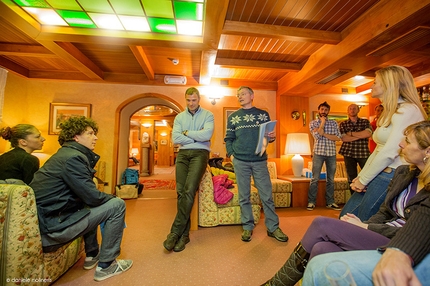
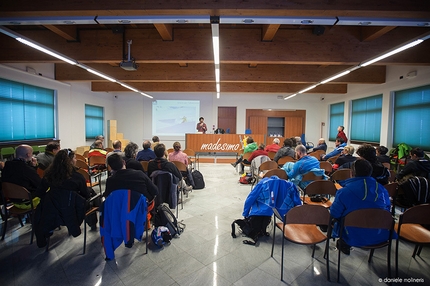
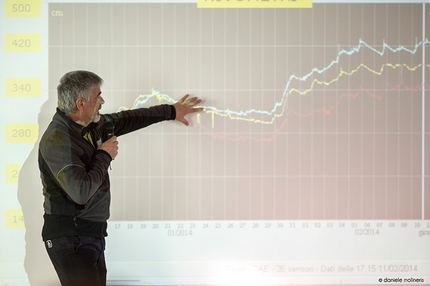
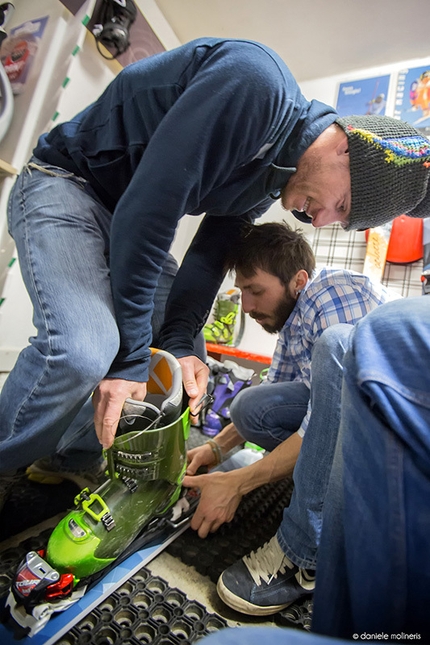
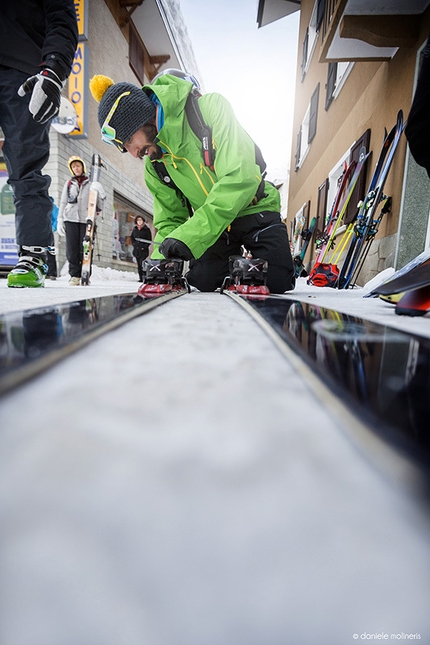
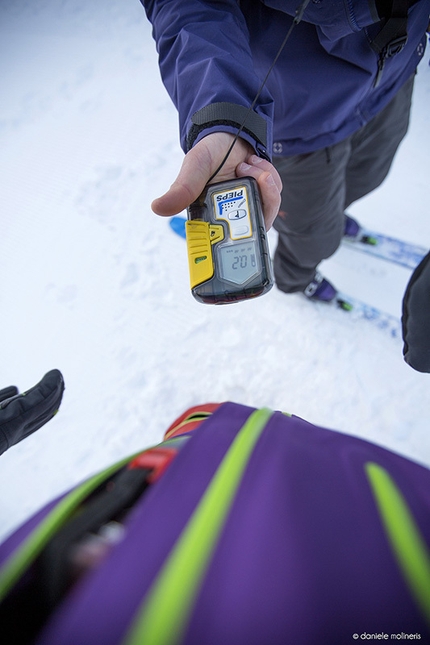
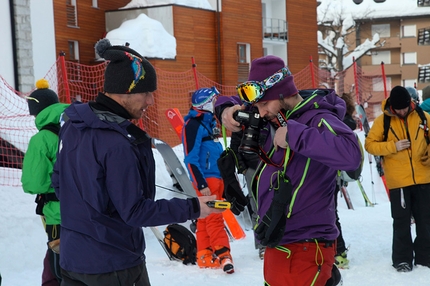
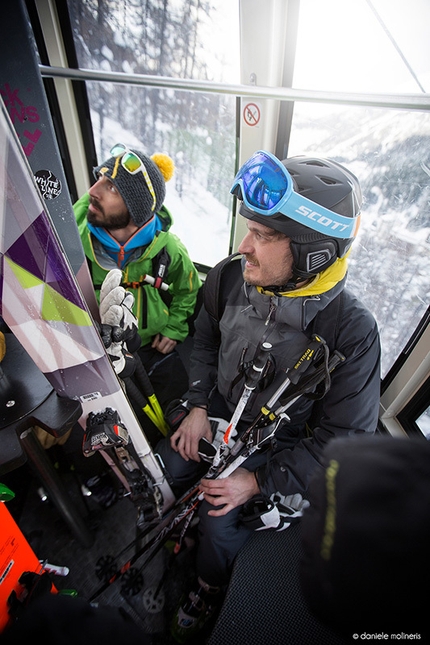
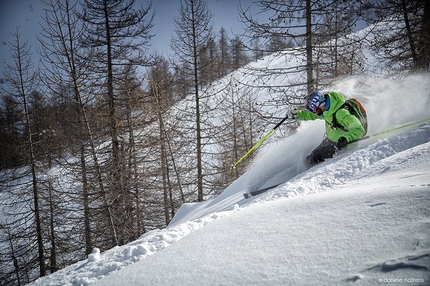
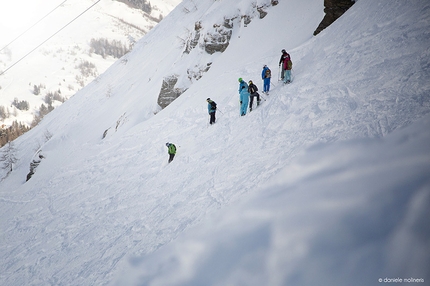
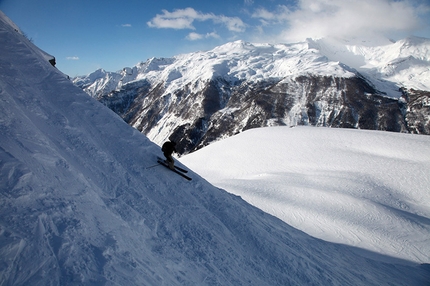
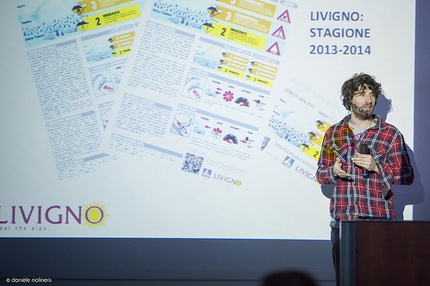
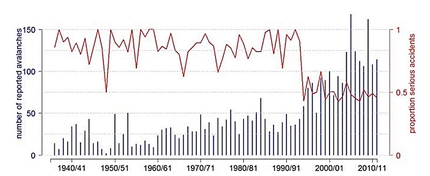
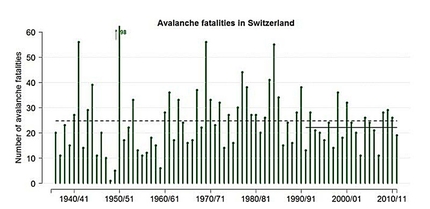
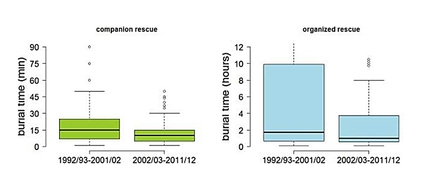
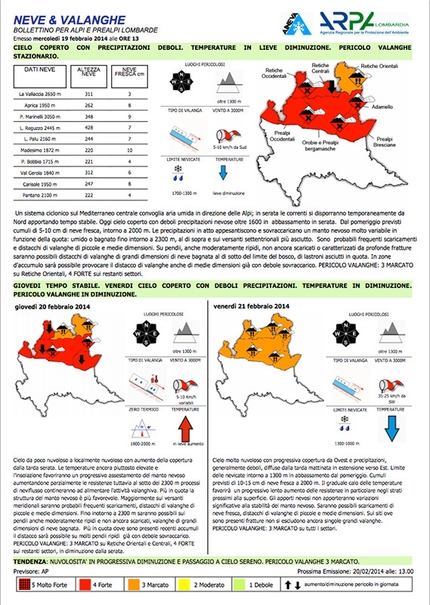
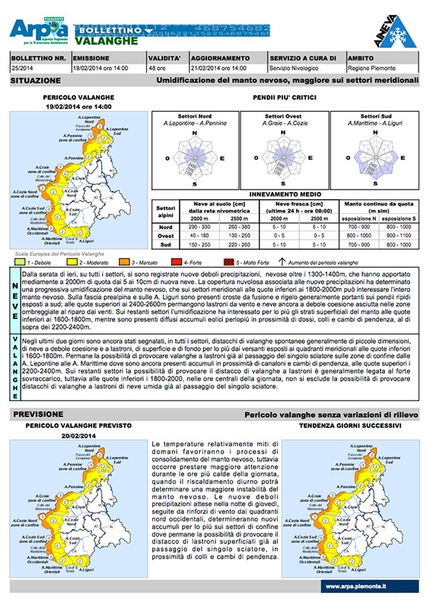
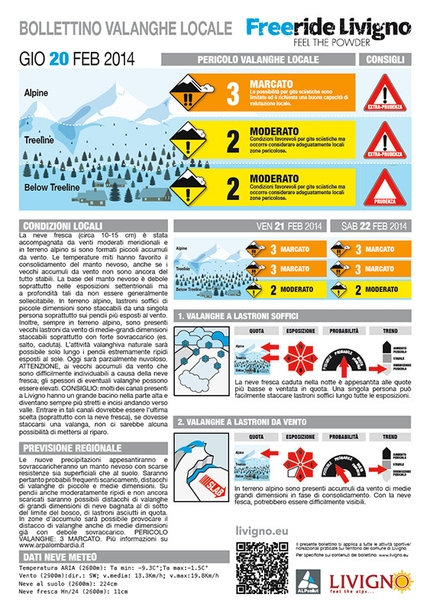
 See all photos
See all photos




